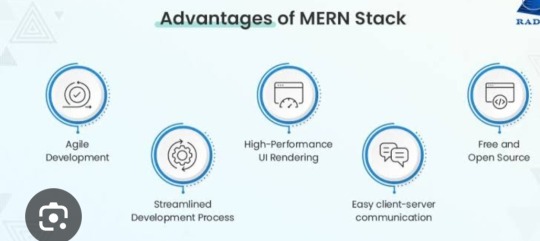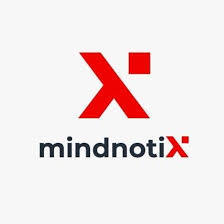#web based training software
Explore tagged Tumblr posts
Text
Humans are not perfectly vigilant

I'm on tour with my new, nationally bestselling novel The Bezzle! Catch me in BOSTON with Randall "XKCD" Munroe (Apr 11), then PROVIDENCE (Apr 12), and beyond!

Here's a fun AI story: a security researcher noticed that large companies' AI-authored source-code repeatedly referenced a nonexistent library (an AI "hallucination"), so he created a (defanged) malicious library with that name and uploaded it, and thousands of developers automatically downloaded and incorporated it as they compiled the code:
https://www.theregister.com/2024/03/28/ai_bots_hallucinate_software_packages/
These "hallucinations" are a stubbornly persistent feature of large language models, because these models only give the illusion of understanding; in reality, they are just sophisticated forms of autocomplete, drawing on huge databases to make shrewd (but reliably fallible) guesses about which word comes next:
https://dl.acm.org/doi/10.1145/3442188.3445922
Guessing the next word without understanding the meaning of the resulting sentence makes unsupervised LLMs unsuitable for high-stakes tasks. The whole AI bubble is based on convincing investors that one or more of the following is true:
There are low-stakes, high-value tasks that will recoup the massive costs of AI training and operation;
There are high-stakes, high-value tasks that can be made cheaper by adding an AI to a human operator;
Adding more training data to an AI will make it stop hallucinating, so that it can take over high-stakes, high-value tasks without a "human in the loop."
These are dubious propositions. There's a universe of low-stakes, low-value tasks – political disinformation, spam, fraud, academic cheating, nonconsensual porn, dialog for video-game NPCs – but none of them seem likely to generate enough revenue for AI companies to justify the billions spent on models, nor the trillions in valuation attributed to AI companies:
https://locusmag.com/2023/12/commentary-cory-doctorow-what-kind-of-bubble-is-ai/
The proposition that increasing training data will decrease hallucinations is hotly contested among AI practitioners. I confess that I don't know enough about AI to evaluate opposing sides' claims, but even if you stipulate that adding lots of human-generated training data will make the software a better guesser, there's a serious problem. All those low-value, low-stakes applications are flooding the internet with botshit. After all, the one thing AI is unarguably very good at is producing bullshit at scale. As the web becomes an anaerobic lagoon for botshit, the quantum of human-generated "content" in any internet core sample is dwindling to homeopathic levels:
https://pluralistic.net/2024/03/14/inhuman-centipede/#enshittibottification
This means that adding another order of magnitude more training data to AI won't just add massive computational expense – the data will be many orders of magnitude more expensive to acquire, even without factoring in the additional liability arising from new legal theories about scraping:
https://pluralistic.net/2023/09/17/how-to-think-about-scraping/
That leaves us with "humans in the loop" – the idea that an AI's business model is selling software to businesses that will pair it with human operators who will closely scrutinize the code's guesses. There's a version of this that sounds plausible – the one in which the human operator is in charge, and the AI acts as an eternally vigilant "sanity check" on the human's activities.
For example, my car has a system that notices when I activate my blinker while there's another car in my blind-spot. I'm pretty consistent about checking my blind spot, but I'm also a fallible human and there've been a couple times where the alert saved me from making a potentially dangerous maneuver. As disciplined as I am, I'm also sometimes forgetful about turning off lights, or waking up in time for work, or remembering someone's phone number (or birthday). I like having an automated system that does the robotically perfect trick of never forgetting something important.
There's a name for this in automation circles: a "centaur." I'm the human head, and I've fused with a powerful robot body that supports me, doing things that humans are innately bad at.
That's the good kind of automation, and we all benefit from it. But it only takes a small twist to turn this good automation into a nightmare. I'm speaking here of the reverse-centaur: automation in which the computer is in charge, bossing a human around so it can get its job done. Think of Amazon warehouse workers, who wear haptic bracelets and are continuously observed by AI cameras as autonomous shelves shuttle in front of them and demand that they pick and pack items at a pace that destroys their bodies and drives them mad:
https://pluralistic.net/2022/04/17/revenge-of-the-chickenized-reverse-centaurs/
Automation centaurs are great: they relieve humans of drudgework and let them focus on the creative and satisfying parts of their jobs. That's how AI-assisted coding is pitched: rather than looking up tricky syntax and other tedious programming tasks, an AI "co-pilot" is billed as freeing up its human "pilot" to focus on the creative puzzle-solving that makes coding so satisfying.
But an hallucinating AI is a terrible co-pilot. It's just good enough to get the job done much of the time, but it also sneakily inserts booby-traps that are statistically guaranteed to look as plausible as the good code (that's what a next-word-guessing program does: guesses the statistically most likely word).
This turns AI-"assisted" coders into reverse centaurs. The AI can churn out code at superhuman speed, and you, the human in the loop, must maintain perfect vigilance and attention as you review that code, spotting the cleverly disguised hooks for malicious code that the AI can't be prevented from inserting into its code. As "Lena" writes, "code review [is] difficult relative to writing new code":
https://twitter.com/qntm/status/1773779967521780169
Why is that? "Passively reading someone else's code just doesn't engage my brain in the same way. It's harder to do properly":
https://twitter.com/qntm/status/1773780355708764665
There's a name for this phenomenon: "automation blindness." Humans are just not equipped for eternal vigilance. We get good at spotting patterns that occur frequently – so good that we miss the anomalies. That's why TSA agents are so good at spotting harmless shampoo bottles on X-rays, even as they miss nearly every gun and bomb that a red team smuggles through their checkpoints:
https://pluralistic.net/2023/08/23/automation-blindness/#humans-in-the-loop
"Lena"'s thread points out that this is as true for AI-assisted driving as it is for AI-assisted coding: "self-driving cars replace the experience of driving with the experience of being a driving instructor":
https://twitter.com/qntm/status/1773841546753831283
In other words, they turn you into a reverse-centaur. Whereas my blind-spot double-checking robot allows me to make maneuvers at human speed and points out the things I've missed, a "supervised" self-driving car makes maneuvers at a computer's frantic pace, and demands that its human supervisor tirelessly and perfectly assesses each of those maneuvers. No wonder Cruise's murderous "self-driving" taxis replaced each low-waged driver with 1.5 high-waged technical robot supervisors:
https://pluralistic.net/2024/01/11/robots-stole-my-jerb/#computer-says-no
AI radiology programs are said to be able to spot cancerous masses that human radiologists miss. A centaur-based AI-assisted radiology program would keep the same number of radiologists in the field, but they would get less done: every time they assessed an X-ray, the AI would give them a second opinion. If the human and the AI disagreed, the human would go back and re-assess the X-ray. We'd get better radiology, at a higher price (the price of the AI software, plus the additional hours the radiologist would work).
But back to making the AI bubble pay off: for AI to pay off, the human in the loop has to reduce the costs of the business buying an AI. No one who invests in an AI company believes that their returns will come from business customers to agree to increase their costs. The AI can't do your job, but the AI salesman can convince your boss to fire you and replace you with an AI anyway – that pitch is the most successful form of AI disinformation in the world.
An AI that "hallucinates" bad advice to fliers can't replace human customer service reps, but airlines are firing reps and replacing them with chatbots:
https://www.bbc.com/travel/article/20240222-air-canada-chatbot-misinformation-what-travellers-should-know
An AI that "hallucinates" bad legal advice to New Yorkers can't replace city services, but Mayor Adams still tells New Yorkers to get their legal advice from his chatbots:
https://arstechnica.com/ai/2024/03/nycs-government-chatbot-is-lying-about-city-laws-and-regulations/
The only reason bosses want to buy robots is to fire humans and lower their costs. That's why "AI art" is such a pisser. There are plenty of harmless ways to automate art production with software – everything from a "healing brush" in Photoshop to deepfake tools that let a video-editor alter the eye-lines of all the extras in a scene to shift the focus. A graphic novelist who models a room in The Sims and then moves the camera around to get traceable geometry for different angles is a centaur – they are genuinely offloading some finicky drudgework onto a robot that is perfectly attentive and vigilant.
But the pitch from "AI art" companies is "fire your graphic artists and replace them with botshit." They're pitching a world where the robots get to do all the creative stuff (badly) and humans have to work at robotic pace, with robotic vigilance, in order to catch the mistakes that the robots make at superhuman speed.
Reverse centaurism is brutal. That's not news: Charlie Chaplin documented the problems of reverse centaurs nearly 100 years ago:
https://en.wikipedia.org/wiki/Modern_Times_(film)
As ever, the problem with a gadget isn't what it does: it's who it does it for and who it does it to. There are plenty of benefits from being a centaur – lots of ways that automation can help workers. But the only path to AI profitability lies in reverse centaurs, automation that turns the human in the loop into the crumple-zone for a robot:
https://estsjournal.org/index.php/ests/article/view/260

If you'd like an essay-formatted version of this post to read or share, here's a link to it on pluralistic.net, my surveillance-free, ad-free, tracker-free blog:
https://pluralistic.net/2024/04/01/human-in-the-loop/#monkey-in-the-middle

Image: Cryteria (modified) https://commons.wikimedia.org/wiki/File:HAL9000.svg
CC BY 3.0 https://creativecommons.org/licenses/by/3.0/deed.en
--
Jorge Royan (modified) https://commons.wikimedia.org/wiki/File:Munich_-_Two_boys_playing_in_a_park_-_7328.jpg
CC BY-SA 3.0 https://creativecommons.org/licenses/by-sa/3.0/deed.en
--
Noah Wulf (modified) https://commons.m.wikimedia.org/wiki/File:Thunderbirds_at_Attention_Next_to_Thunderbird_1_-_Aviation_Nation_2019.jpg
CC BY-SA 4.0 https://creativecommons.org/licenses/by-sa/4.0/deed.en
#pluralistic#ai#supervised ai#humans in the loop#coding assistance#ai art#fully automated luxury communism#labor
379 notes
·
View notes
Text
A couple cars art tips I’ve learnt from doing Pixar cars fanart
1. If you really wanna get facial expressions right (atleast in my case this worked) take a picture of yourself doing the facial expression, then essentially slap that onto your art.
2. Sedans are fun to draw! And they’re good practice! It helps you get a feel for more rounded out cars instead of blocky ones
3. If you wanna make an environment, (this worked for me atleast) model a crude replica in an online web based modeling software (I used tinkercad!)
4. Don’t just draw cars! You should also draw planes, trains, boats, submarines, etc!
5. If you’re making a character, try to make a full 360 ref sheet!
6. Don’t focus on making your art look as good as others, focus on having fun while doing it. That’s helped me so much.
7. Always try to do more dynamic poses! Don’t just do one constant pose!
8. Study how a car gestures. I recommend rewatching the cars/planes movies and paying close attention to how a character gestures!
9. Make sure to compact every car a little! It makes a character more appealing if they don’t look exactly like their real world counterpart!
10. Read the art of cars 1, 2, 3 & the art of planes! Looking at how the professionals do it can help!
11. This video has helped me understand different car types well!

#pixar cars#cars 2006#cars pixar#disney cars#planes#cars 2#cars movie#disney planes#planes fire and rescue#dusty crophopper
78 notes
·
View notes
Note
Hellooo‼️‼️I just stumbled in your blog and I saw the LED mask request thing and I suddenly have brainrot😭😭 it's such a idea idfk i just love it‼️‼️
ANYWAY🤯 reader comes back from a mission, solo or not! Is up to you :] and then they just have a bullet stuck in their mask. Just straight up a bullet stuck, very big cracks on their mask. It can still kind of work, only one side so when they see them reader simply waves while the other half of their LED mask just shows: ':D' as if there wasn't a bullet in their mask.
That's all! I hope you are having a good day, afternoon, or night‼️‼️make sure to stay hydrated because I'm a walking desert☺
THATS SUCH A BITTERSWEET IMAGE THOUGH, I LOVE YOUR BRAIN ANON!!

A part of the operation had to be done solo by you - it needed your specialised skill set and it was too risky sending others with you because stealth was crucial. You succeeded in distracting the enemy. That transmission was half an hour ago.
The 141 never leave their own behind, the extraction point is far enough from enemy territory that they can spare some time to wait for you. Price and Ghost are going through extra logistics, Soap is distracting himself by disassembling and reassembling gear and Gaz is just... watching. Watching for a sign that you are there. And soon enough, amongst the fog of dust kicked up by fallen buildings and bodies, is the silhouette of you. The faint LEDs emanate a light that refract off the dust, creating a halo-like glow where your head should be.
As you approach closer, it is silent. There are no light-hearted quips from you, just the audible crunch of your combat boots against the dry earth. If it weren't for your unmistakable stature and gait, the rest of the 141 would have thought it was an imposter who had stolen your mask.
Johnny only utters a quiet "Jesus..." as the details of your mask come into view. A bullet was now embedded in your mask where the side of your temple would be, a chilling reminder of the clutches of death you narrowly escaped from for now. It shone maliciously against your darkened mask that could only let out the occasional spark and whir of short circuiting.
Every few seconds, there would be a flicker of the LEDs working. It was hard to distinguish with the cracks that splayed across the mask like a web, all stemming from the bullet that had made itself at home millimeters away from your head. An eye was missing, that section of your mask completely disconnected from the software. Broken circuitry had the odd pixel flickering in a false positive in various colours before dying.
But despite the stakes, your mask was smiling.
"You broken?" Gaz asked tentatively.
You pause in comtemplation, perhaps the voice amplifier in your mask was fried or you're just too tired to speak - none of the 141 would blame you for either. Instead, you offer a thumbs up before trudging over to Ghost, his eyes trained on you. You rest your forehead against his shoulder and he responds with a slight grunt, but he surrenders to your tired antics. Tilting your head to the rest of the 141, your broken mask flits to a "z_z".
There's a pat on your back from John, both to comfort and to also make sure you don't fall asleep. His hand settles on your shoulder, strong and ready to haul you to the helicopter.
"Good to have you back, Sergeant. Let's get you - and your mask - patched up."
With some encouragement from Johnny and Kyle, you're coaxed to extraction. As you sit on the ride back on base, you bring a hand to probe the damage of the bullet. The metal is colder than death, so smooth it slipped from your grip like your own life had you conducted in the mission any differently. It seems the rest of the 141 knew exactly what you were thinking as your fingers traced every crack of your visor.
But before they can question you, you retract your hand and sit up straight. You're here and you're alive. Granted a little cracked, your soul a little more jaded than in the few hours prior, but for now the legend of the mask lives on.

Masked Reader Masterlist Call of Duty Masterlist
#cod x reader#call of duty x reader#cod x you#task force 141 x reader#captain price x reader#john price x reader#ghost x reader#simon riley x reader#john mactavish x reader#soap x reader#gaz x reader#kyle garrick x reader#anon mail ❤️#/*avery checks the mailbox*/#/*avery actually writes*/#/*cod x masked reader*/
1K notes
·
View notes
Text
Weaponizing violence. With alarming regularity, the nation continues to be subjected to spates of violence that terrorizes the public, destabilizes the country’s ecosystem, and gives the government greater justifications to crack down, lock down, and institute even more authoritarian policies for the so-called sake of national security without many objections from the citizenry.
Weaponizing surveillance, pre-crime and pre-thought campaigns. Surveillance, digital stalking and the data mining of the American people add up to a society in which there’s little room for indiscretions, imperfections, or acts of independence. When the government sees all and knows all and has an abundance of laws to render even the most seemingly upstanding citizen a criminal and lawbreaker, then the old adage that you’ve got nothing to worry about if you’ve got nothing to hide no longer applies. Add pre-crime programs into the mix with government agencies and corporations working in tandem to determine who is a potential danger and spin a sticky spider-web of threat assessments, behavioral sensing warnings, flagged “words,” and “suspicious” activity reports using automated eyes and ears, social media, behavior sensing software, and citizen spies, and you having the makings for a perfect dystopian nightmare. The government’s war on crime has now veered into the realm of social media and technological entrapment, with government agents adopting fake social media identities and AI-created profile pictures in order to surveil, target and capture potential suspects.
Weaponizing digital currencies, social media scores and censorship. Tech giants, working with the government, have been meting out their own version of social justice by way of digital tyranny and corporate censorship, muzzling whomever they want, whenever they want, on whatever pretext they want in the absence of any real due process, review or appeal. Unfortunately, digital censorship is just the beginning. Digital currencies (which can be used as “a tool for government surveillance of citizens and control over their financial transactions”), combined with social media scores and surveillance capitalism create a litmus test to determine who is worthy enough to be part of society and punish individuals for moral lapses and social transgressions (and reward them for adhering to government-sanctioned behavior). In China, millions of individuals and businesses, blacklisted as “unworthy” based on social media credit scores that grade them based on whether they are “good” citizens, have been banned from accessing financial markets, buying real estate or travelling by air or train.
Weaponizing compliance. Even the most well-intentioned government law or program can be—and has been—perverted, corrupted and used to advance illegitimate purposes once profit and power are added to the equation. The war on terror, the war on drugs, the war on COVID-19, the war on illegal immigration, asset forfeiture schemes, road safety schemes, school safety schemes, eminent domain: all of these programs started out as legitimate responses to pressing concerns and have since become weapons of compliance and control in the police state’s hands.
Weaponizing entertainment. For the past century, the Department of Defense’s Entertainment Media Office has provided Hollywood with equipment, personnel and technical expertise at taxpayer expense. In exchange, the military industrial complex has gotten a starring role in such blockbusters as Top Gun and its rebooted sequel Top Gun: Maverick, which translates to free advertising for the war hawks, recruitment of foot soldiers for the military empire, patriotic fervor by the taxpayers who have to foot the bill for the nation’s endless wars, and Hollywood visionaries working to churn out dystopian thrillers that make the war machine appear relevant, heroic and necessary. As Elmer Davis, a CBS broadcaster who was appointed the head of the Office of War Information, observed, “The easiest way to inject a propaganda idea into most people’s minds is to let it go through the medium of an entertainment picture when they do not realize that they are being propagandized.”
Weaponizing behavioral science and nudging. Apart from the overt dangers posed by a government that feels justified and empowered to spy on its people and use its ever-expanding arsenal of weapons and technology to monitor and control them, there’s also the covert dangers associated with a government empowered to use these same technologies to influence behaviors en masse and control the populace. In fact, it was President Obama who issued an executive order directing federal agencies to use “behavioral science” methods to minimize bureaucracy and influence the way people respond to government programs. It’s a short hop, skip and a jump from a behavioral program that tries to influence how people respond to paperwork to a government program that tries to shape the public’s views about other, more consequential matters. Thus, increasingly, governments around the world—including in the United States—are relying on “nudge units” to steer citizens in the direction the powers-that-be want them to go, while preserving the appearance of free will.
Weaponizing desensitization campaigns aimed at lulling us into a false sense of security. The events of recent years—the invasive surveillance, the extremism reports, the civil unrest, the protests, the shootings, the bombings, the military exercises and active shooter drills, the lockdowns, the color-coded alerts and threat assessments, the fusion centers, the transformation of local police into extensions of the military, the distribution of military equipment and weapons to local police forces, the government databases containing the names of dissidents and potential troublemakers—have conspired to acclimate the populace to accept a police state willingly, even gratefully.
Weaponizing fear and paranoia. The language of fear is spoken effectively by politicians on both sides of the aisle, shouted by media pundits from their cable TV pulpits, marketed by corporations, and codified into bureaucratic laws that do little to make our lives safer or more secure. Fear, as history shows, is the method most often used by politicians to increase the power of government and control a populace, dividing the people into factions, and persuading them to see each other as the enemy. This Machiavellian scheme has so ensnared the nation that few Americans even realize they are being manipulated into adopting an “us” against “them” mindset. Instead, fueled with fear and loathing for phantom opponents, they agree to pour millions of dollars and resources into political elections, militarized police, spy technology and endless wars, hoping for a guarantee of safety that never comes. All the while, those in power—bought and paid for by lobbyists and corporations—move their costly agendas forward, and “we the suckers” get saddled with the tax bills and subjected to pat downs, police raids and round-the-clock surveillance.
Weaponizing genetics. Not only does fear grease the wheels of the transition to fascism by cultivating fearful, controlled, pacified, cowed citizens, but it also embeds itself in our very DNA so that we pass on our fear and compliance to our offspring. It’s called epigenetic inheritance, the transmission through DNA of traumatic experiences. For example, neuroscientists observed that fear can travel through generations of mice DNA. As The Washington Post reports, “Studies on humans suggest that children and grandchildren may have felt the epigenetic impact of such traumatic events such as famine, the Holocaust and the Sept. 11, 2001, terrorist attacks.”
Weaponizing the future. With greater frequency, the government has been issuing warnings about the dire need to prepare for the dystopian future that awaits us. For instance, the Pentagon training video, “Megacities: Urban Future, the Emerging Complexity,” predicts that by 2030 (coincidentally, the same year that society begins to achieve singularity with the metaverse) the military would be called on to use armed forces to solve future domestic political and social problems. What they’re really talking about is martial law, packaged as a well-meaning and overriding concern for the nation’s security. The chilling five-minute training video paints an ominous picture of the future bedeviled by “criminal networks,” “substandard infrastructure,” “religious and ethnic tensions,” “impoverishment, slums,” “open landfills, over-burdened sewers,” a “growing mass of unemployed,” and an urban landscape in which the prosperous economic elite must be protected from the impoverishment of the have nots. “We the people” are the have-nots.
The end goal of these mind control campaigns—packaged in the guise of the greater good—is to see how far the American people will allow the government to go in re-shaping the country in the image of a totalitarian police state.
11 notes
·
View notes
Text
Are there generative AI tools I can use that are perhaps slightly more ethical than others? —Better Choices
No, I don't think any one generative AI tool from the major players is more ethical than any other. Here’s why.
For me, the ethics of generative AI use can be broken down to issues with how the models are developed—specifically, how the data used to train them was accessed—as well as ongoing concerns about their environmental impact. In order to power a chatbot or image generator, an obscene amount of data is required, and the decisions developers have made in the past—and continue to make—to obtain this repository of data are questionable and shrouded in secrecy. Even what people in Silicon Valley call “open source” models hide the training datasets inside.
Despite complaints from authors, artists, filmmakers, YouTube creators, and even just social media users who don’t want their posts scraped and turned into chatbot sludge, AI companies have typically behaved as if consent from those creators isn’t necessary for their output to be used as training data. One familiar claim from AI proponents is that to obtain this vast amount of data with the consent of the humans who crafted it would be too unwieldy and would impede innovation. Even for companies that have struck licensing deals with major publishers, that “clean” data is an infinitesimal part of the colossal machine.
Although some devs are working on approaches to fairly compensate people when their work is used to train AI models, these projects remain fairly niche alternatives to the mainstream behemoths.
And then there are the ecological consequences. The current environmental impact of generative AI usage is similarly outsized across the major options. While generative AI still represents a small slice of humanity's aggregate stress on the environment, gen-AI software tools require vastly more energy to create and run than their non-generative counterparts. Using a chatbot for research assistance is contributing much more to the climate crisis than just searching the web in Google.
It’s possible the amount of energy required to run the tools could be lowered—new approaches like DeepSeek’s latest model sip precious energy resources rather than chug them—but the big AI companies appear more interested in accelerating development than pausing to consider approaches less harmful to the planet.
How do we make AI wiser and more ethical rather than smarter and more powerful? —Galaxy Brain
Thank you for your wise question, fellow human. This predicament may be more of a common topic of discussion among those building generative AI tools than you might expect. For example, Anthropic’s “constitutional” approach to its Claude chatbot attempts to instill a sense of core values into the machine.
The confusion at the heart of your question traces back to how we talk about the software. Recently, multiple companies have released models focused on “reasoning” and “chain-of-thought” approaches to perform research. Describing what the AI tools do with humanlike terms and phrases makes the line between human and machine unnecessarily hazy. I mean, if the model can truly reason and have chains of thoughts, why wouldn’t we be able to send the software down some path of self-enlightenment?
Because it doesn’t think. Words like reasoning, deep thought, understanding—those are all just ways to describe how the algorithm processes information. When I take pause at the ethics of how these models are trained and the environmental impact, my stance isn’t based on an amalgamation of predictive patterns or text, but rather the sum of my individual experiences and closely held beliefs.
The ethical aspects of AI outputs will always circle back to our human inputs. What are the intentions of the user’s prompts when interacting with a chatbot? What were the biases in the training data? How did the devs teach the bot to respond to controversial queries? Rather than focusing on making the AI itself wiser, the real task at hand is cultivating more ethical development practices and user interactions.
12 notes
·
View notes
Text
BigProfitPulse.io Reviews Explore the Best Trading Conditions

The online trading world is dynamic and ever-evolving making it crucial to choose a reliable and efficient platform that provides traders with the best opportunities. BigProfitPulse.io reviews showcase why this platform stands out as a leader in the financial industry offering a combination of innovative tools competitive trading conditions and high-speed execution. With a diverse range of financial instruments and a user-friendly interface traders can seamlessly engage in trading without unnecessary hurdles. The ability to access real-time market prices and leverage personalized support ensures that every trader from beginners to professionals can optimize their strategies and achieve financial success.
BigProfitPulse.io Reviews Why Traders Choose Us
Traders are always in search of a platform that not only meets their expectations but also exceeds them. BigProfitPulse.io reviews highlight how this platform consistently delivers top-tier trading services ensuring that every trader has access to the best possible conditions. A major reason why traders trust BigProfitPulse.io is the platform’s commitment to transparency and efficiency. With instant order execution and competitive spreads traders can capitalize on opportunities without worrying about delays or hidden fees. Additionally the platform’s training programs provide users with invaluable insights helping them refine their skills and develop well-informed trading strategies. Whether you are just getting started or already an experienced trader BigProfitPulse.io has the tools and resources to support your journey.
BigProfitPulse.io A Cutting-Edge Trading Platform
One of the most discussed features in BigProfitPulse.io reviews is its cutting-edge trading platform which is designed to cater to traders of all levels. The web-based terminal allows users to analyze financial markets track real-time price movements and execute trades effortlessly from their browsers. There is no need for additional software installations or complicated setup procedures making it easier than ever to engage in global trading. Whether you are trading stocks foreign currencies or precious metals BigProfitPulse.io provides an advanced yet accessible trading environment. The platform is equipped with the latest tools for technical analysis ensuring that traders can make data-driven decisions with confidence.

BigProfitPulse.io Reviews Comprehensive Client Support
A key highlight in BigProfitPulse.io reviews is the comprehensive customer support that ensures traders receive assistance whenever they need it. The platform prides itself on offering professional support services with a team of knowledgeable experts available to answer questions resolve technical issues and provide valuable insights. Whether traders require help navigating the trading terminal understanding market trends or optimizing their trading strategies BigProfitPulse.io’s support team is always ready to assist. This level of commitment to customer service sets the platform apart making it a preferred choice for traders looking for reliability and security.
BigProfitPulse.io Real-Time Liquidity and Instant Execution
Market conditions can change in an instant and traders need a platform that provides real-time liquidity and swift order execution. BigProfitPulse.io reviews emphasize how the platform ensures that trades are processed without delays allowing traders to take advantage of market fluctuations as they happen. The integration of interbank liquidity ensures that users get the best available prices maximizing their profitability. By eliminating execution lags and providing seamless order processing BigProfitPulse.io enhances the overall trading experience giving users a competitive edge in the financial markets.
BigProfitPulse.io Reviews Personalized Training for Traders
Education and continuous learning play a significant role in a trader’s success and BigProfitPulse.io reviews highlight how the platform offers personalized training programs to support users at every stage of their trading journey. Traders are matched with experienced tutors who provide insights into market movements risk management and profitable trading strategies. This hands-on approach helps traders develop confidence and refine their skills ensuring they can navigate financial markets with greater precision. The platform’s commitment to education makes it an ideal choice for both newcomers and seasoned professionals looking to expand their knowledge.
BigProfitPulse.io Reviews Secure and Fast Withdrawals
Security and convenience are top priorities for traders and BigProfitPulse.io reviews confirm that the platform provides a safe and efficient withdrawal process. Users can request fund withdrawals at any time knowing that transactions will be processed swiftly without unnecessary delays. The platform employs advanced security measures to protect user funds and personal data giving traders peace of mind while they focus on their trading activities. Whether traders are actively trading or cashing out their profits they can trust BigProfitPulse.io to handle their transactions smoothly and securely.
BigProfitPulse.io Getting Started is Easy
A major advantage noted in BigProfitPulse.io reviews is the simplicity of getting started on the platform. Registration is quick and straightforward allowing traders to create an account and begin trading within minutes. The low minimum deposit requirement makes it accessible to traders of all backgrounds whether they are testing the waters or fully committing to the trading lifestyle. The platform also provides personalized guidance during the onboarding process ensuring that new traders have all the necessary tools and knowledge to begin their journey with confidence.
BigProfitPulse.io The Advantages of Trading Here
Traders continue to choose BigProfitPulse.io for the numerous advantages it offers. BigProfitPulse.io reviews frequently mention the following key benefits
Competitive spreads and low trading commissions ensuring maximum profitability
Swift and hassle-free processing of withdrawal requests allowing traders to access their funds at any time
Timely updates on significant market events helping traders stay informed and make strategic decisions
Access to global financial markets enabling users to diversify their portfolios and explore multiple investment opportunities
Professional customer support dedicated to resolving issues and providing expert assistance

BigProfitPulse.io Reviews Your Path to Financial Success
Finding the right trading platform is essential for achieving success in the financial markets. BigProfitPulse.io reviews highlight how this platform combines advanced technology expert guidance and superior trading conditions to create an unparalleled trading experience. Whether you are an aspiring trader or a seasoned professional looking for a reliable partner BigProfitPulse.io provides all the tools and resources necessary for success. By choosing BigProfitPulse.io traders gain access to a secure transparent and innovative trading environment that empowers them to reach their financial goals.
6 notes
·
View notes
Text
Hey tronblr. It's sysop. Let's talk about the Midjourney thing.
(There's also a web-based version of this over on reindeer flotilla dot net).
Hey tronblr. It's sysop. Let's talk about the AI thing for a minute.
Automattic, who owns Tumblr and WordPress dot com, is selling user data to Midjourney. This is, obviously, Bad. I've seen a decent amount of misinformation and fearmongering going around the last two days around this, and a lot of people I know are concerned about where to go from here. I don't have solutions, or even advice -- just thoughts about what's happening and the possibilities.
In particular... let's talk about this post, Go read it if you haven't. To summarize, it takes aim at Glaze (the anti-AI tool that a lot of artists have started using). The post makes three assertions, which I'm going to paraphrase:
It's built on stolen code.
It doesn't matter whether you use it anyway.
So just accept that it's gonna happen.
I'd like to offer every single bit of this a heartfelt "fuck off, all the way to the sun".
Let's start with the "stolen code" assertion. I won't get into the weeds on this, but in essence, the Glaze/Nightshade team pulled some open-source code from DiffusionBee in their release last March, didn't attribute it correctly, and didn't release the full source code (which that particular license requires). The team definitely should have done their due diligence -- but (according to the team, anyway) they fixed the issue within a few days. We'll have to take their word on that for now, of course -- the code isn't open source. That's not great, but that doesn't mean they're grifters. It means they're trying to keep people who work on LLMs from picking apart their tactics out in the open. It sucks ass, actually, but... yeah. Sometimes that's how software development works, from experience.
Actually, given the other two assertions... y'know what? No. Fuck off into the sun, twice. Because I have no patience for this shit, and you shouldn't either.
Yes, you should watermark your art. Yes, it's true that you never know whether your art is being scraped. And yes, a whole lot of social media sites are jumping on the "generative AI" hype train.
That doesn't mean that you should just accept that your art is gonna be scraped, and that there's nothing you can do about it. It doesn't mean that Glaze and Nightshade don't work, or aren't worth the effort (although right now, their CPU requirements are a bit prohibitive). Every little bit counts.
Fuck nihilism! We do hope and pushing forward here, remember?
As far as what we do now, though? I don't know. Between the Midjourney shit, KOSA, and people just generally starting to leave... I get that it feels like the end of something. But it's not -- or it doesn't have to be. Instead of jumping over to other platforms (which are just as likely to have similar issues in several years), we should be building other spaces that aren't on centralized platforms, where big companies don't get to make decisions about our community for us. It's hard. It's really hard. But it is possible.
All I know is that if we want a space that's ours, where we retain control over our work and protect our people, we've gotta make it ourselves. Nobody's gonna do it for us, y'know?
47 notes
·
View notes
Text
Workers said Project Nimbus is the kind of lucrative contract that neglects ethical guardrails that outspoken members of Google’s workforce have demanded in recent years. “I am very worried that Google has no scruples if they’re going to work with the Israeli government,” said Joshua Marxen, a Google Cloud software engineer who helped to organize the protest. “Google has given us no reason to trust them.” The Tuesday protest represents continuing tension between Google’s workforce and its senior management over how the company’s technology is used. In recent years Google workers have objected to military contracts, challenging Google’s work with U.S. Customs and Border Protection and its role in a defense program building artificial intelligence tools used to refine drone strikes. Workers have alleged that the company has cracked down on information-sharing, siloed controversial projects and enforced a workplace culture that increasingly punishes them for speaking out.
Google did not immediately respond to a request for comment about the Tuesday protest and workers’ concerns over Project Nimbus. The Israeli Finance Ministry announced its contract with Google and Amazon in April 2021 as a project “intended to provide the government, the defense establishment and others with an all-encompassing cloud solution.” Google has largely refused to release details of the contract, the specific capabilities Israel will receive, or how they will be used. In July 2022, the Intercept reported that training documents for Israeli government personnel indicate Google is providing software that the company claims can recognize people, gauge emotional states from facial expressions and track objects in video footage. Google Cloud spokesperson Atle Erlingsson told Wired in September 2022 that the company proudly supports Israel’s government and said critics had misrepresented Project Nimbus. “Our work is not directed at highly sensitive or classified military workloads,” he told Wired. Erlingsson, however, acknowledged that the contract will provide Israel’s military access to Google technology. Former Google worker Ariel Koren, who has long been publicly critical of Project Nimbus, said “it adds insult to injury for Palestinian activists and Palestinians generally” that Google Cloud’s profitability milestone coincides with the 75th anniversary of the Nakba — which refers to the mass displacement and dispossession of Palestinians following creation of the state of Israel in 1948.
In March 2022, The Times reported allegations by Koren — at the time a product marketing manager at Google for Education — that Google had retaliated against her for criticizing the contract, issuing a directive that she move to São Paulo, Brazil, within 17 business days or lose her job. Google told The Times that it investigated the incident and found no evidence of retaliation. When Koren resigned from Google in August 2022 she published a memo explaining reasons for her departure, writing that “Google systematically silences Palestinian, Jewish, Arab and Muslim voices concerned about Google’s complicity in violations of Palestinian human rights.” Koren said Google’s apathy makes her and others believe more vigorous protest actions are justified. “This is a concrete disruption that is sending a clear message to Google: We won’t allow for business as usual, so long as you continue to profit off of a nefarious contract that expands Israeli apartheid.” Mohammad Khatami, a YouTube software engineer based in New York, participated in a small protest of Project Nimbus at a July Amazon Web Services conference in Manhattan. Khatami said major layoffs at Google announced in January pushed him to get more involved in the Alphabet Workers Union, which provides resources to Khatami and other union members in an anti-military working group — though the union has not taken a formal stance on Project Nimbus. “Greed and corporate interests were being put ahead of workers and I think the layoffs just illustrated that for me very clearly,” Khatami said.
16 notes
·
View notes
Text
Object-Oriented Programming (OOP) Explaine
Object-Oriented Programming (OOP) is a programming paradigm based on the concept of "objects," which represent real-world entities. Objects combine data (attributes) and functions (methods) into a single unit. OOP promotes code reusability, modularity, and scalability, making it a popular approach in modern software development.
Core Concepts of Object-Oriented Programming
Classes and Objects
Class: A blueprint or template for creating objects. It defines properties (attributes) and behaviors (methods).
Object: An instance of a class. Each object has unique data but follows the structure defined by its
Encapsulations
Encapsulation means bundling data (attributes) and methods that operate on that data within a class. It protects object properties by restricting direct access.
Access to attributes is controlled through getter and setter methods.Example: pythonCopyEditclass Person: def __init__(self, name): self.__name = name # Private attribute def get_name(self): return self.__name person = Person("Alice") print(person.get_name()) # Output: Alice
Inheritance
Inheritance allows a class (child) to inherit properties and methods from another class (parent). It promotes code reuse and hierarchical relationships.Example: pythonCopyEditclass Animal: def speak(self): print("Animal speaks") class Dog(Animal): def speak(self): print("Dog barks") dog = Dog() dog.speak() # Output: Dog barks
Polymorphism
Polymorphism allows methods to have multiple forms. It enables the same function to work with different object types.
Two common types:
Method Overriding (child class redefines parent method).
Method Overloading (same method name, different parameters – not natively supported in Python).Example: pythonCopyEditclass Bird: def sound(self): print("Bird chirps") class Cat: def sound(self): print("Cat meows") def make_sound(animal): animal.sound() make_sound(Bird()) # Output: Bird chirps make_sound(Cat()) # Output: Cat meows
Abstraction
Abstraction hides complex implementation details and shows only the essential features.
In Python, this is achieved using abstract classes and methods (via the abc module).Example: pythonCopyEditfrom abc import ABC, abstractmethod class Shape(ABC): @abstractmethod def area(self): pass class Circle(Shape): def __init__(self, radius): self.radius = radius def area(self): return 3.14 * self.radius * self.radius circle = Circle(5) print(circle.area()) # Output: 78.5
Advantages of Object-Oriented Programming
Code Reusability: Use inheritance to reduce code duplication.
Modularity: Organize code into separate classes, improving readability and maintenance.
Scalability: Easily extend and modify programs as they grow.
Data Security: Protect sensitive data using encapsulation.
Flexibility: Use polymorphism for adaptable and reusable methods.
Real-World Applications of OOP
Software Development: Used in large-scale applications like operating systems, web frameworks, and databases.
Game Development: Objects represent game entities like characters and environments.
Banking Systems: Manage customer accounts, transactions, and security.
E-commerce Platforms: Handle products, users, and payment processing.
Machine Learning: Implement models as objects for efficient training and prediction.
Conclusion
Object-Oriented Programming is a powerful paradigm that enhances software design by using objects, encapsulation, inheritance, polymorphism, and abstraction. It is widely used in various industries to build scalable, maintainable, and efficient applications. Understanding and applying OOP principles is essential for modern software development.
: pythonCopyEdit
class Car: def __init__(self, brand, model): self.brand = brand self.model = model def display_info(self): print(f"Car: {self.brand} {self.model}") my_car = Car("Toyota", "Camry") my_car.display_info() # Output: Car: Toyota Camry
Encapsulation
2 notes
·
View notes
Text
What is Python, How to Learn Python?
What is Python?
Python is a high-level, interpreted programming language known for its simplicity and readability. It is widely used in various fields like: ✅ Web Development (Django, Flask) ✅ Data Science & Machine Learning (Pandas, NumPy, TensorFlow) ✅ Automation & Scripting (Web scraping, File automation) ✅ Game Development (Pygame) ✅ Cybersecurity & Ethical Hacking ✅ Embedded Systems & IoT (MicroPython)
Python is beginner-friendly because of its easy-to-read syntax, large community, and vast library support.
How Long Does It Take to Learn Python?
The time required to learn Python depends on your goals and background. Here’s a general breakdown:
1. Basics of Python (1-2 months)
If you spend 1-2 hours daily, you can master:
Variables, Data Types, Operators
Loops & Conditionals
Functions & Modules
Lists, Tuples, Dictionaries
File Handling
Basic Object-Oriented Programming (OOP)
2. Intermediate Level (2-4 months)
Once comfortable with basics, focus on:
Advanced OOP concepts
Exception Handling
Working with APIs & Web Scraping
Database handling (SQL, SQLite)
Python Libraries (Requests, Pandas, NumPy)
Small real-world projects
3. Advanced Python & Specialization (6+ months)
If you want to go pro, specialize in:
Data Science & Machine Learning (Matplotlib, Scikit-Learn, TensorFlow)
Web Development (Django, Flask)
Automation & Scripting
Cybersecurity & Ethical Hacking
Learning Plan Based on Your Goal
📌 Casual Learning – 3-6 months (for automation, scripting, or general knowledge) 📌 Professional Development – 6-12 months (for jobs in software, data science, etc.) 📌 Deep Mastery – 1-2 years (for AI, ML, complex projects, research)
Scope @ NareshIT:
At NareshIT’s Python application Development program you will be able to get the extensive hands-on training in front-end, middleware, and back-end technology.
It skilled you along with phase-end and capstone projects based on real business scenarios.
Here you learn the concepts from leading industry experts with content structured to ensure industrial relevance.
An end-to-end application with exciting features
Earn an industry-recognized course completion certificate.
For more details:
#classroom#python#education#learning#teaching#institute#marketing#study motivation#studying#onlinetraining
2 notes
·
View notes
Text
Master Flutter with Real-Time Scenario-Based Training Learn from industry experts with 10+ years of experience and gain hands-on knowledge in Flutter development. Why Choose Us? ✔ Resume Building & Interview Skills ✔ Individual Focused Training ✔ 100% Job Assurance ✔ Lifetime Access to Study Material Contact Us Now: +91 83471 93531 MDIDM INFOWAY – Your Pathway to a Successful Tech Career #FlutterTraining #LearnFlutter #CareerGrowth #MDIDMInfoway #ITTraining #JobAssurance #UIUX #WebDevelopment

2 notes
·
View notes
Text
AI & Tech-Related Jobs Anyone Could Do
Here’s a list of 40 jobs or tasks related to AI and technology that almost anyone could potentially do, especially with basic training or the right resources:
Data Labeling/Annotation
AI Model Training Assistant
Chatbot Content Writer
AI Testing Assistant
Basic Data Entry for AI Models
AI Customer Service Representative
Social Media Content Curation (using AI tools)
Voice Assistant Testing
AI-Generated Content Editor
Image Captioning for AI Models
Transcription Services for AI Audio
Survey Creation for AI Training
Review and Reporting of AI Output
Content Moderator for AI Systems
Training Data Curator
Video and Image Data Tagging
Personal Assistant for AI Research Teams
AI Platform Support (user-facing)
Keyword Research for AI Algorithms
Marketing Campaign Optimization (AI tools)
AI Chatbot Script Tester
Simple Data Cleansing Tasks
Assisting with AI User Experience Research
Uploading Training Data to Cloud Platforms
Data Backup and Organization for AI Projects
Online Survey Administration for AI Data
Virtual Assistant (AI-powered tools)
Basic App Testing for AI Features
Content Creation for AI-based Tools
AI-Generated Design Testing (web design, logos)
Product Review and Feedback for AI Products
Organizing AI Training Sessions for Users
Data Privacy and Compliance Assistant
AI-Powered E-commerce Support (product recommendations)
AI Algorithm Performance Monitoring (basic tasks)
AI Project Documentation Assistant
Simple Customer Feedback Analysis (AI tools)
Video Subtitling for AI Translation Systems
AI-Enhanced SEO Optimization
Basic Tech Support for AI Tools
These roles or tasks could be done with minimal technical expertise, though many would benefit from basic training in AI tools or specific software used in these jobs. Some tasks might also involve working with AI platforms that automate parts of the process, making it easier for non-experts to participate.
4 notes
·
View notes
Text
What is Mern stack And Its importance? Before that I will Tell you the best institute for Mern stack course in Chandigarh.

What is Mern stack?
MERN Stack is a popular JavaScript-based technology stack used for building full-stack web applications. It consists of four key technologies:
MongoDB: A NoSQL database that stores data in a flexible, JSON-like format.
Express.js: A lightweight and fast backend framework for Node.js.
React.js: A front-end JavaScript library for building user interfaces.
Node.js: A runtime environment that allows JavaScript to run on the server side.

Importance of Mern Stack :
Full-Stack JavaScript – Uses JavaScript for frontend and backend, simplifying development.
High Performance – Node.js ensures fast, scalable applications.
Cost-Effective – Open-source, reducing development costs.
Rapid Development – React’s reusable components speed up UI building.
Flexibility – Suitable for web apps, SPAs, eCommerce, and real-time applications.
Scalability – MongoDB handles large data efficiently.
Strong Community Support – Large developer base ensures continuous updates and support.

Now i will tell you the best institute for Mern stack course in Chandigarh .

Excellence Technology is a leading EdTech (Educational technology) company dedicated to empowering individuals with cutting -edge IT skills and bridging the gap between education and industry demands. Specializing in IT training ,carrer development, and placement assistance ,the company equipts learners with the technical expertise and practical experience needed to thrive in today's competitive tech landscape. We provide IT courses like python ,Full stack Development, Web Design ,Graphic Design and Digital Marketing.
Contact Us for more details: 93177-88822

Extech Digital is a leading software development company dedicated to empowering individuals with cutting -edge IT skills and bridging the gap between education and industry demands. Specializing in IT training ,carrer development, and placement assistance ,the company equipt learners with the technical expertise and practical experience needed to thrive in today's competitive tech landscape. e provide IT courses like Python ,Full stack Development, Web Design ,Graphic Design and Digital Marketing.
Contact Us for more details: 93177-88822

Excellence academy is a leading software development company dedicated to empowering individual with cutting edge IT skills and bridging the gap between education and industry demands.specializing in IT training, career development, and placement assistance, the company equits learners with the technical expertise and practical experience needed to thrive in today's landscape. We provide IT courses like python, full stack development,Web design, and Digital marketing.
Contact Us for more details: 93177-88822
About Author
Nikita Thakur
Mern stack AI Developer/ 2+ years of experience
Excellence technology
Professional summary
Nikita thakur is a skilled MERN Stack AI Developer with over 2 years of experience at Excellence Technology. Proficient in MongoDB, Express.js, React.js, and Node.js, she integrates AI solutions to build scalable, high-performance web applications. Nikita excels in developing innovative solutions, enhancing user experiences, and driving business growth through technology.
2 notes
·
View notes
Text
👉 VidVoicer Review ✅ Features, Pricing, Bonuses and OTOs 🚀

VidVoicer Overview 🌟
VidVoicer is an AI-powered tool designed to create videos and voiceovers quickly and efficiently. Its standout features include high-quality HD video rendering, text-to-speech voiceovers in 150+ voices and 50+ languages, and a built-in video editor. The software is beginner-friendly, allowing users to create whiteboard, explainer, and social media videos without prior experience. It is entirely cloud-based, so it can be accessed on various devices without installation.
👉 Click Here for Get Instant Access VidVoicer 🖰 >>
Key Features 🔑
Voiceovers & Languages: Generate human-like voiceovers in multiple languages and genders with pitch, tone, and speed controls.
Video Creation: Transform text into videos, use images from keywords or URLs, and integrate voiceovers seamlessly.
Video Editing: Add logos, watermarks, background music, and customize videos easily.
HD Quality: All videos are rendered in high definition.
Commercial License: Sell videos and voiceovers to clients for unlimited revenue potential.
👉 Click Here for Get Instant Access VidVoicer 🖰 >>
Pricing & Upgrades 💰
Front-End (FE): $37Includes commercial rights, basic video and voiceover creation tools, and a 1GB monthly storage limit.
OTO 1 - Pro Edition: $67Adds unlimited videos/voiceovers, extended character limits, custom music, 2GB storage, and access to stock videos.
OTO 2 - Content Writer: $37AI-powered copywriting tools for creating sales copies, email templates, articles, and more.
OTO 3 - Agency Rights: $97Enables starting a video/voiceover agency with marketing resources.
Discount codes are often available, such as a 50% off coupon during promotions.
👉 Click Here for Get Instant Access VidVoicer 🖰 >>
Bonuses 🎁
VidVoicer often comes with exclusive bonuses, including additional templates, tutorials, and stock resources, depending on the purchase plan.
Strengths & Monetization 🌍💼
Ideal for freelancers, agencies, or content creators aiming to provide services like explainer videos, voiceovers, and podcasts.
The commercial license enables users to generate income by selling creations directly or offering services on platforms like Fiverr and Upwork.
👉 Click Here for Get Instant Access VidVoicer 🖰 >>
FAQs
👉 What Exactly Is VidVoicer?
VidVoicer is a web-based platform for creating voiceovers and videos. Since it does both, it's the only tool you'll need. Simply log in, enter any text (such as a video script), choose a voice and language, and click the button to instantly create a voiceover or video. You can then edit or download those files immediately.
👉 How Many Voiceovers Can I Create?
You can create unlimited number of voiceovers Longer up to 1000 characters per voiceover with the personal license, and up to 3000 characters per voiceover with commercial license.
👉 How many videos can I create?
You can create as many videos as you need. Each video will be stored in the cloud storage on our platform, and you can also download the MP4 file. Your membership includes 1GB of storage, so if you use all of that, you can simply download some videos and delete them from the cloud to free up some space.
👉 How To Get Started?
Just click the order button and go through the checkout process. Your membership account will instantly be set up and activated. When you log in, you'll find tutorial videos, and you can begin using the tools immediately.
👉 Is there a commercial license included?
There is an option to buy commercial license. Buyers can opt for personal access as well as commercial license. Commercial rights will enable you to sell these services and make money.
👉 Click Here for Get Instant Access VidVoicer 🖰 >>
👉 Is There Any Training Included?
Yes, We Have Created A Video Tutorial To Guide You How To Use The Software Just To Make Sure You Make No Errors And Do It Easily, Hassle Free.
👉 Is It Still Worth it if I Have Only Few Voiceovers To Be Generated?
Sure. Would you prefer to spend $100 or more to have one voiceover created? With VidVoicer, you can create voiceovers on demand, over and over. You can create the voiceovers you need now, and any that you may need in the future, all for the small one-time fee to join today. With VidVoicer you don't have to search for freelancers or deal with contracts. To us that sounds like it's worth it even for a few voiceovers!
👉 Will This Work On Mac And PC?
Yes, It Doesn’t Matter What Operating System Of Device You’re Using. It Is Easy To Use And Works Perfectly, Every Time.
👉 Click Here for Get Instant Access VidVoicer 🖰 >>
👉 Do You Provide Support And Updates?
Yes! VidVoicer Is Super Easy To Use, But If There’s Ever An Issue, We’re Right Here. Send Us An Email And We’ll Fix You Up! We’ll Also Let You Know When New Updates Are Available, And Offer Them To You For Free, As A Valued Customer!
👉 Is There A Money Back Policy?
Yes, You Get 30 Days To Use VidVoicer And Make Sure This Is For You. If For ANY Reason You’re Not Satisfied, Just Let Us Know, And We’ll Get You A Refund Of Your Tiny Investment Here Today.
👉 Is It Newbie-Friendly?
Yes. You Don’t Need Any Special Skills Or Technical Experience To Generate Human Like Voiceovers.
👉 Is It Compatible With All Video Editing Softwares?
Yes It Is. VidVoicer Is Compatible With All Video Apps.

👉 Click Here for Get Instant Access VidVoicer 🖰 >>
#vidvoicer review#vidvoicer#vidvoicer demo#vidvoicer reviews#vidvoicer software review#vidvoicer bonus#vidvoicer bonuses#get vidvoicer#buy vidvoicer#vidvoicer review & bonus#vidvoicer otos#vidvoicer review bonus#vidvoicer review and demo#review vidvoicer#vidvoicer demo review#vidvoicer review 2022#vidvoicer preview#vidvoicer review bonuses#vidvoicer review and bonus#vidvoicer software#what is vidvoicer#vidvoice review#vidvoicer discount#marketing#affiliatemarketing#onlinemarketing#review#reviews#software#preview
3 notes
·
View notes
Text
IT companies in Coimbatore :Hiring freshers role and benefit
Coimbatore has emerged as a preferred location for IT professionals due to its affordable cost of living, high-quality educational institutions, and the city’s well-developed infrastructure. Unlike metropolitan cities, IT companies in Coimbatore offers a balanced lifestyle with a lower cost of living, which appeals to many working professionals. With a pool of skilled talent graduating from nearby engineering and technical institutions, Coimbatore is an ideal place for IT companies to find qualified candidates for various roles, making it a hot spot for job seekers.

Who Are the Leading IT Companies in Coimbatore?
The city hosts several top IT companies, including Tata Consultancy Services (TCS), Cognizant, Wipro, and Robert Bosch, along with growing regional players like KGISL and Aspire Systems. These companies offer a variety of services from software development to business consulting and automation solutions. Working with such companies not only provides a chance to learn and grow but also adds credibility to one's career profile. Their well-established infrastructure and focus on training employees make them attractive employers in the region.
Best IT Companies in Coimbatore :
Coimbatore, one of Tamil Nadu's major industrial hubs, has seen significant growth in the IT sector. Known for its skilled workforce, affordable infrastructure, and a supportive business ecosystem, the city hosts many IT companies that offer a wide range of services from software development to digital transformation.

Here’s a look at some of the best IT company in Coimbatore :
Accenture :

Global consulting and technology services company providing full-fledged IT and business process services.
ThoughtWorks:

Leaders in software consultancy to get custom software developed through agile methodology and digital transformation
Payoda Technologies :

focuses primarily on aspects of digital transformation, analytics, cloud solution development and software development.
Sridhar Vembu Institute of Technology (Zoho Corp) :

It is based in Chennai; however, the innovation and research wing of Zoho is based in Coimbatore, where it works on software product development.
Softratech Info :

The company provides IT solutions, consultancy, software development, and support services.
Repute Network :

A technology-based company, focusing on digital payments, financial technologies, and blockchain solutions
Mindnotix Technologies :

A technology firm, developing web and mobile applications as well as AR/VR-based applications, and AI-driven applications.
Kumaraguru College of Technology :

Technology Business Incubator (KCT-TBI) - Incubates start-ups and tech innovation in IoT, AI, robotics, and software solutions.
Revature India :

Trains and develops software services and products, focusing on creating technical talent for the global market.
i2i Software Solutions :

Offers end-to-end software solutions and IT services, with a focus on custom development.
eQuadriga Software Pvt Ltd :

is an IT services company focusing on software development, mobile apps, and digital marketing.
Conclusion :
Coimbatore’s IT sector is full of opportunities for freshers, thanks to a supportive ecosystem of companies and a growing tech community. From MNCs like Cognizant and Bosch to dynamic startups, IT companies in Coimbatore provides ample options for fresh graduates eager to kickstart their careers. With a focus on learning, networking, and skill development, freshers can build a promising career in this thriving city.
#it company#IT companies in Coimbatore#internship#freshers it job#jobseekers#jobs#employment#careers#workplace#inside job
2 notes
·
View notes
Text
Key Programming Languages Every Ethical Hacker Should Know
In the realm of cybersecurity, ethical hacking stands as a critical line of defense against cyber threats. Ethical hackers use their skills to identify vulnerabilities and prevent malicious attacks. To be effective in this role, a strong foundation in programming is essential. Certain programming languages are particularly valuable for ethical hackers, enabling them to develop tools, scripts, and exploits. This blog post explores the most important programming languages for ethical hackers and how these skills are integrated into various training programs.
Python: The Versatile Tool
Python is often considered the go-to language for ethical hackers due to its versatility and ease of use. It offers a wide range of libraries and frameworks that simplify tasks like scripting, automation, and data analysis. Python’s readability and broad community support make it a popular choice for developing custom security tools and performing various hacking tasks. Many top Ethical Hacking Course institutes incorporate Python into their curriculum because it allows students to quickly grasp the basics and apply their knowledge to real-world scenarios. In an Ethical Hacking Course, learning Python can significantly enhance your ability to automate tasks and write scripts for penetration testing. Its extensive libraries, such as Scapy for network analysis and Beautiful Soup for web scraping, can be crucial for ethical hacking projects.
JavaScript: The Web Scripting Language
JavaScript is indispensable for ethical hackers who focus on web security. It is the primary language used in web development and can be leveraged to understand and exploit vulnerabilities in web applications. By mastering JavaScript, ethical hackers can identify issues like Cross-Site Scripting (XSS) and develop techniques to mitigate such risks. An Ethical Hacking Course often covers JavaScript to help students comprehend how web applications work and how attackers can exploit JavaScript-based vulnerabilities. Understanding this language enables ethical hackers to perform more effective security assessments on websites and web applications.
Biggest Cyber Attacks in the World
youtube
C and C++: Low-Level Mastery
C and C++ are essential for ethical hackers who need to delve into low-level programming and system vulnerabilities. These languages are used to develop software and operating systems, making them crucial for understanding how exploits work at a fundamental level. Mastery of C and C++ can help ethical hackers identify and exploit buffer overflows, memory corruption, and other critical vulnerabilities. Courses at leading Ethical Hacking Course institutes frequently include C and C++ programming to provide a deep understanding of how software vulnerabilities can be exploited. Knowledge of these languages is often a prerequisite for advanced penetration testing and vulnerability analysis.
Bash Scripting: The Command-Line Interface
Bash scripting is a powerful tool for automating tasks on Unix-based systems. It allows ethical hackers to write scripts that perform complex sequences of commands, making it easier to conduct security audits and manage multiple tasks efficiently. Bash scripting is particularly useful for creating custom tools and automating repetitive tasks during penetration testing. An Ethical Hacking Course that offers job assistance often emphasizes the importance of Bash scripting, as it is a fundamental skill for many security roles. Being proficient in Bash can streamline workflows and improve efficiency when working with Linux-based systems and tools.
SQL: Database Security Insights
Structured Query Language (SQL) is essential for ethical hackers who need to assess and secure databases. SQL injection is a common attack vector used to exploit vulnerabilities in web applications that interact with databases. By understanding SQL, ethical hackers can identify and prevent SQL injection attacks and assess the security of database systems. Incorporating SQL into an Ethical Hacking Course can provide students with a comprehensive understanding of database security and vulnerability management. This knowledge is crucial for performing thorough security assessments and ensuring robust protection against database-related attacks.
Understanding Course Content and Fees
When choosing an Ethical Hacking Course, it’s important to consider how well the program covers essential programming languages. Courses offered by top Ethical Hacking Course institutes should provide practical, hands-on training in Python, JavaScript, C/C++, Bash scripting, and SQL. Additionally, the course fee can vary depending on the institute and the comprehensiveness of the program. Investing in a high-quality course that covers these programming languages and offers practical experience can significantly enhance your skills and employability in the cybersecurity field.
Certification and Career Advancement
Obtaining an Ethical Hacking Course certification can validate your expertise and improve your career prospects. Certifications from reputable institutes often include components related to the programming languages discussed above. For instance, certifications may test your ability to write scripts in Python or perform SQL injection attacks. By securing an Ethical Hacking Course certification, you demonstrate your proficiency in essential programming languages and your readiness to tackle complex security challenges. Mastering the right programming languages is crucial for anyone pursuing a career in ethical hacking. Python, JavaScript, C/C++, Bash scripting, and SQL each play a unique role in the ethical hacking landscape, providing the tools and knowledge needed to identify and address security vulnerabilities. By choosing a top Ethical Hacking Course institute that covers these languages and investing in a course that offers practical training and job assistance, you can position yourself for success in this dynamic field. With the right skills and certification, you’ll be well-equipped to tackle the evolving challenges of cybersecurity and contribute to protecting critical digital assets.
3 notes
·
View notes